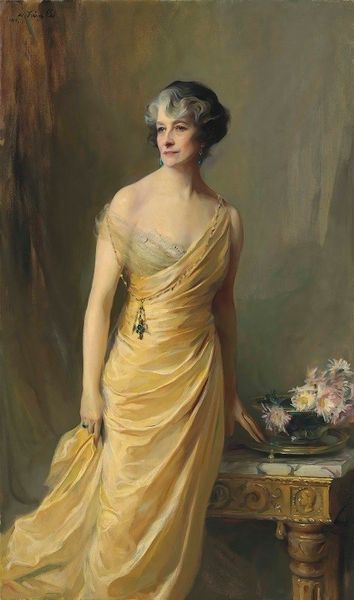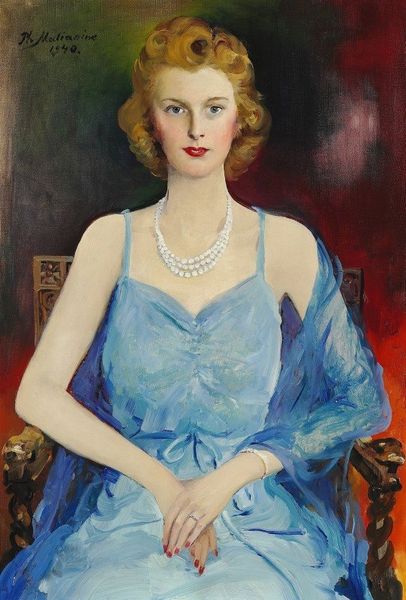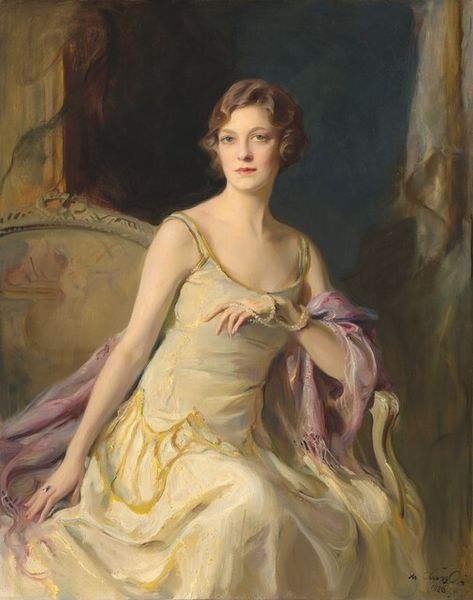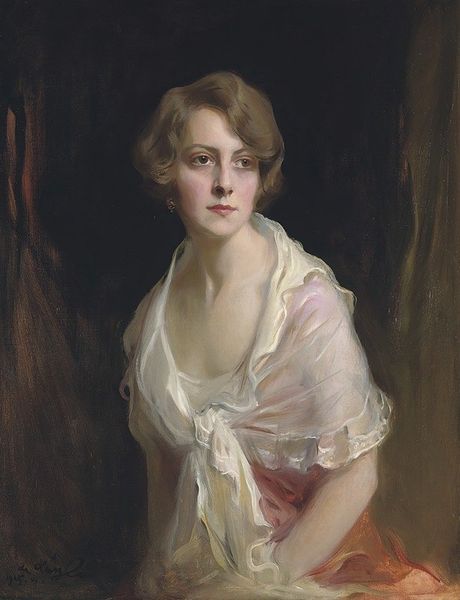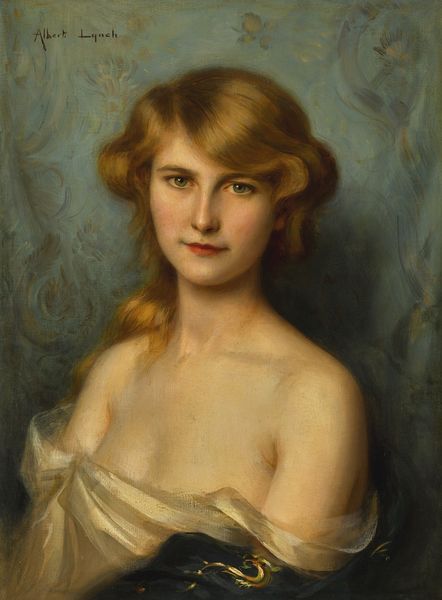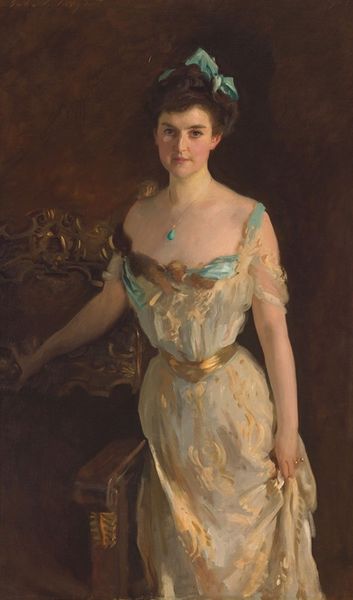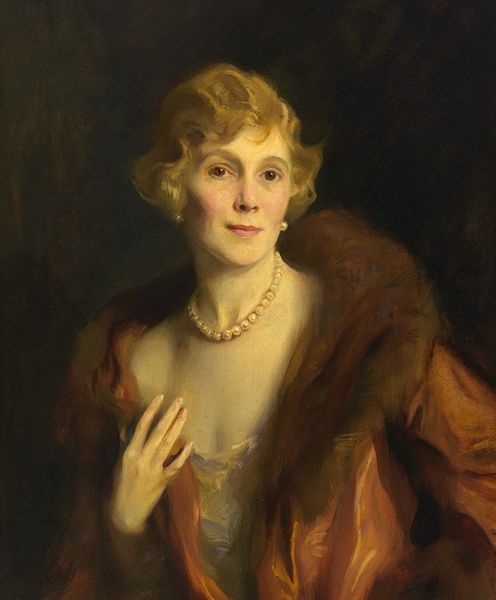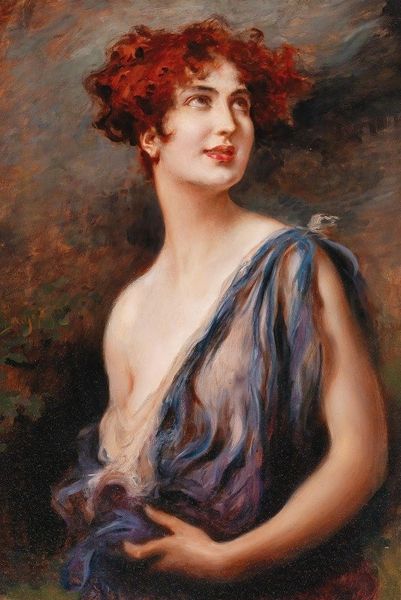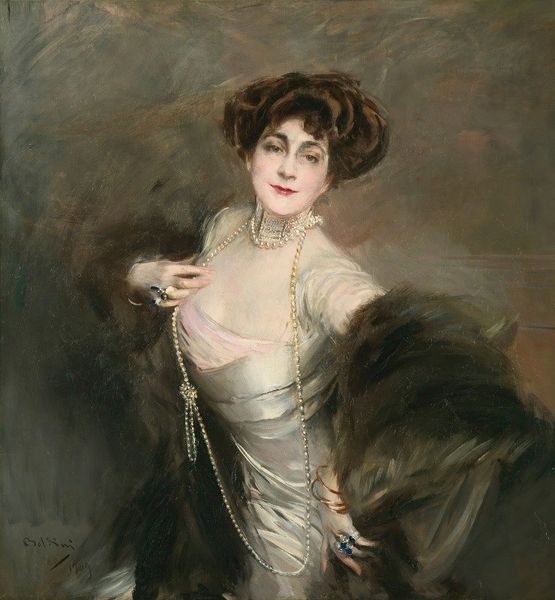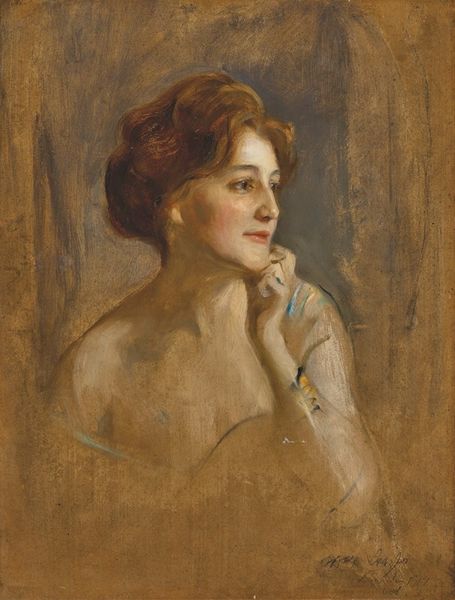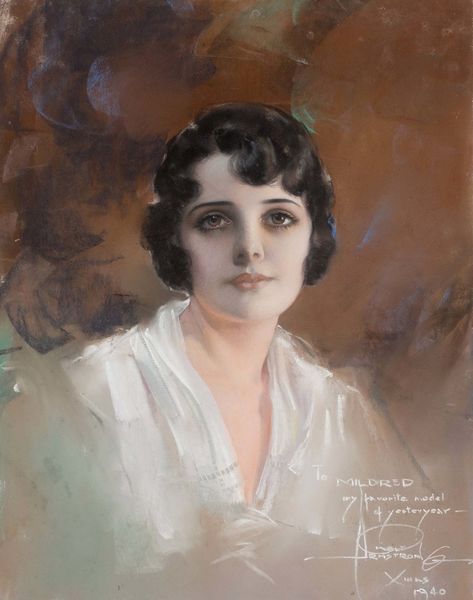
painting, oil-paint
#
portrait
#
figurative
#
painting
#
oil-paint
#
academic-art
#
realism
Copyright: Public Domain: Artvee
Curator: What a serene image! The cool blues of her shawl really contrast with the warmer tones of the background, creating an almost dreamlike effect. Editor: Indeed. This is "Mrs. William Burden, A.M.," a portrait painted in 1932 by Philip Alexius de László. The artwork, rendered in oil, adheres to the academic tradition of portraiture popular during that time. What interests me is how this fits within a broader socio-political framework of early 20th-century elite representation. Curator: Absolutely. It seems to typify a certain echelon of society. I am curious, though, about the “A.M.” after her name. To what does it refer? It strikes me as relevant in considering a figure's power and status beyond their marital connections. Editor: It stands for Artium Magister—Master of Arts. Placing it after her name signaled both her education and accomplishments beyond societal expectations for women. That detail is powerful and crucial to understanding Mrs. Burden’s individual identity within a system of entrenched privilege. The very act of commissioning a portrait such as this, displayed for public consumption, was a declaration of intellectual and social capital. Curator: The pearls are such a conventional accessory. What do they communicate within that statement? Is this portrait meant to challenge or reinforce societal norms? Editor: It's complex. Pearls were markers of status and, simultaneously, linked to notions of purity and femininity. Their inclusion, and her hand carefully touching the necklace, might have been intended to both signal conventional virtues and discreetly communicate the Burden family's wealth. The artist used those elements to carefully control and broadcast her identity. The pose and the gaze—direct, but not defiant—suggest an awareness of her position and power. Curator: I am drawn back to that blue shawl and how the loose drapery suggests an openness to the gaze. It gives her portrait an alluring, and in a way, vulnerable dimension. The gaze then makes the image feel powerful because it holds one back, and communicates something far beyond traditional expectations for elite female portraits. Editor: Exactly. De László wasn’t merely capturing a likeness. He was participating in the ongoing construction of identity, carefully shaped and circulated through cultural institutions. Looking at this, one is forced to realize the intricate interplay between individual agency, artistic intent, and broader systems of representation. Curator: This dialogue helped me realize so many elements I was unaware of at first sight. There’s power, politics, and performance woven together. Editor: It really highlights the importance of carefully considering historical contexts to uncover the nuances behind these images. It makes it even more thought-provoking.
Comments
No comments
Be the first to comment and join the conversation on the ultimate creative platform.
